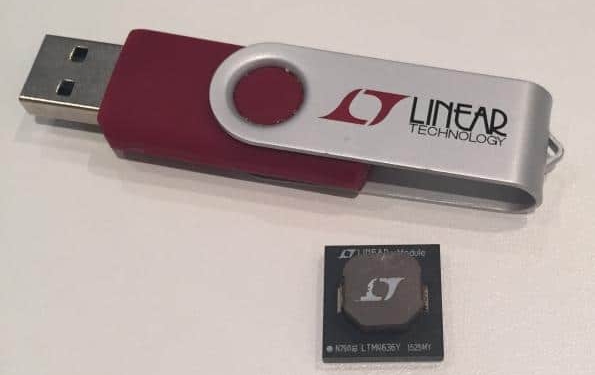source: EETimes news
November 21, 2016 // By Nick Flaherty
Linear Technology is shrinking its integrated power modules with a 3D packaging technology that allows large inductors to be used as heat sinks.
Since launching modules ten years ago, the current density of modules has increased five fold, says Don Paulus, vice president and general manager of power products.
“We developed the concept for integrated micromodule power regulator over 10 years ago and the challenges our customers were facing then are even more obvious now,” he said. “To provide a very complete high performance regulator struck a cord with our customers and everyone has no space, everyone needs to double their density so we need to provide more power in less space. We launched our first integrated power module in October 2005 with 10A in a package that measured 15 x 15 x 2.8mm – in February 2016 we put 50A in a 16 x 16 x 5mm package.”
The key is the increase in the height from 2.8mm to 5mm and Linear has developed a way to use an inductor on top of the module.
“If we can make a 3D structure we have more room, so we put the inductor on top to take it into the ambient air flow,” he said. “Now that we have less constraints on the magnetics we can use a larger inductor with lower parasitics. We have the copper clips to the inductor on the top, using a similar technology to mount a heatsink.”
The larger inductor acts as the heatsink and also helps to reduce the transient currents, again reducing the thermal profile.
“The result of the thermal performance and transient translates into a wide ambient temperature range – we can operate at over 70ºC at 1V even without airflow, and with some airflow we are above 80ºC,” said Paulus.
































